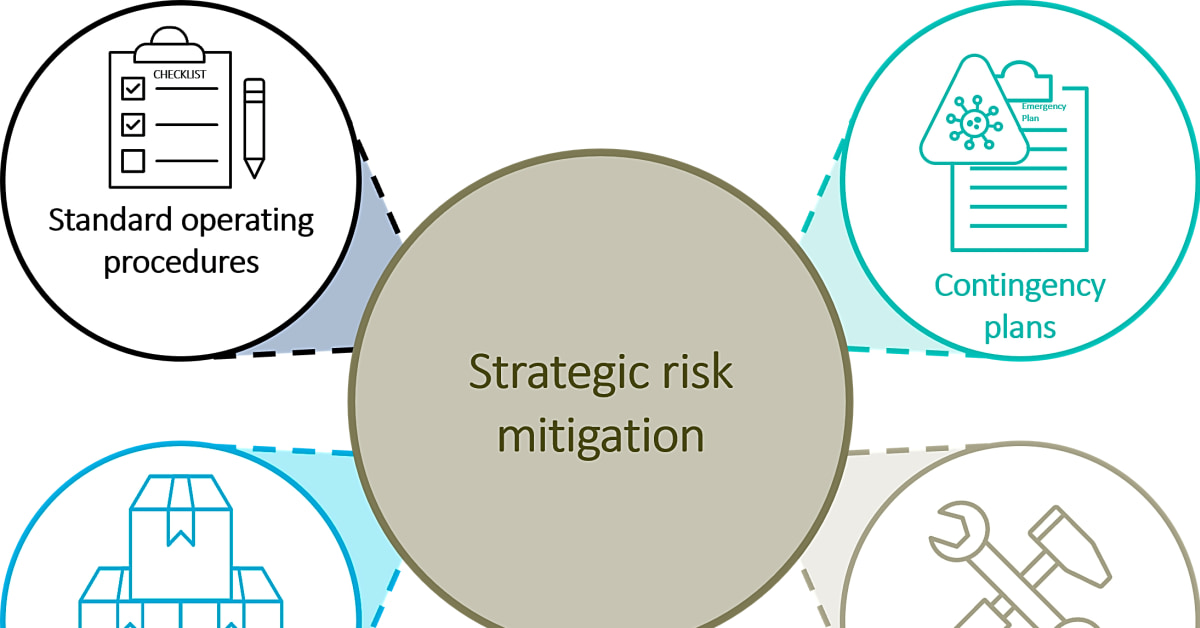Risk management is an integral part of running a successful business. It involves identifying potential risks and taking proactive measures to avoid or mitigate them. In today’s fast-paced and ever-changing business landscape, it is crucial for companies to have effective strategies in place for avoidance and prevention. These strategies not only protect the company’s bottom line, but they also ensure the safety and well-being of employees and stakeholders.The concept of avoidance and prevention may seem simple, but it encompasses a wide range of actions and approaches that businesses can take. From implementing strict safety protocols to conducting thorough risk assessments, there are many ways in which companies can safeguard themselves against potential threats. In this article, we will delve into the various strategies that businesses can adopt for avoidance and prevention, and how they can contribute to overall success.Effective risk management involves understanding the potential risks faced by a business and taking proactive measures to prevent or minimize their impact. This is where avoidance and prevention come into play. By identifying potential risks and implementing measures to avoid them, companies can save themselves from significant financial losses, reputational damage, and even legal issues.In this article, we will focus on the context of ‘none’ for our discussion on avoidance and prevention. This means we will cover a broad spectrum of industries and risk factors, as every business faces unique challenges and threats. Whether you are a small start-up or a large corporation, understanding how to effectively avoid and prevent risks is crucial for long-term success.As we dive into the topic of avoidance and prevention, keep in mind that these strategies are not one-size-fits-all. Every business must assess its own risks and develop tailored approaches that work best for them. However, by understanding the fundamentals and learning from successful risk management practices, companies can create a solid foundation for avoiding potential threats and ensuring smooth operations.Without further ado, let’s explore the world of avoidance and prevention, and how it can contribute to business success in the context of ‘none’.
In today’s competitive business landscape, companies are constantly looking for ways to improve their performance and gain an edge over their competitors. Effective risk management strategies play a crucial role in achieving this goal, as they help businesses identify and mitigate potential pitfalls.
The first step in avoiding and preventing risks is understanding what they are and how they can impact your business. This requires conducting a thorough analysis of your company’s strengths, weaknesses, opportunities, and threats, commonly known as a SWOT analysis. By identifying potential risks and vulnerabilities, you can then take proactive measures to mitigate them.
One way to mitigate risks is by implementing risk management protocols. This can include creating backup plans for potential disasters or unexpected events, diversifying your investments to reduce the impact of market fluctuations, and regularly reviewing and updating your strategies to adapt to changing circumstances.
Another important aspect of avoidance and prevention is building a strong company culture that prioritizes risk management. This involves educating employees about potential risks and training them on how to handle different situations. By involving all members of the organization in risk management efforts, companies can create a more resilient and proactive approach to avoiding potential risks.
Moreover, it is essential for businesses to stay informed about industry trends and developments that may pose risks to their operations. This includes keeping track of regulatory changes, technological advancements, and economic shifts that could impact the company’s performance. By staying ahead of these potential risks, businesses can be better prepared to avoid or mitigate them.
Avoidance and prevention also involve continuously monitoring and evaluating the effectiveness of risk management strategies. This means regularly conducting risk assessments and making necessary adjustments to ensure that the company is adequately protected. It also means creating a culture of continuous improvement, where businesses strive to identify and address any potential vulnerabilities before they turn into major risks.
In conclusion, avoidance and prevention are crucial components of successful risk management strategies. By understanding potential risks, implementing proactive measures, and continuously monitoring and evaluating the effectiveness of risk management protocols, businesses can minimize their exposure to threats and position themselves for long-term success.
Business Development
Another important aspect of avoidance and prevention is business development. This involves continuously seeking out new opportunities for growth and diversification. By expanding your business into new markets or industries, you can reduce your reliance on a single revenue stream, making your company more resilient to potential risks.
Risk Management
Effective risk management is an essential part of avoidance and prevention. This involves identifying potential risks, assessing their likelihood and impact, and implementing measures to mitigate them. This can include everything from creating contingency plans to obtaining insurance coverage.
Strategic Planning
One of the key ways to avoid risks is through effective strategic planning. This involves setting clear goals and objectives for your company, as well as developing a roadmap to achieve them. By having a well-thought-out plan in place, you can anticipate potential challenges and take steps to prevent them from derailing your progress.
Market Analysis
Conducting regular market analysis is crucial for staying ahead of potential risks. By monitoring industry trends and consumer behavior, you can identify potential shifts in the market that may impact your business. This will allow you to adjust your strategies accordingly and avoid potential pitfalls.
In conclusion, avoidance and prevention are crucial for long-term business success. By understanding and anticipating potential risks, implementing strategic planning, pursuing business development opportunities, and conducting regular market analysis, you can reduce your company’s exposure to risks and ensure its continued growth and success.


